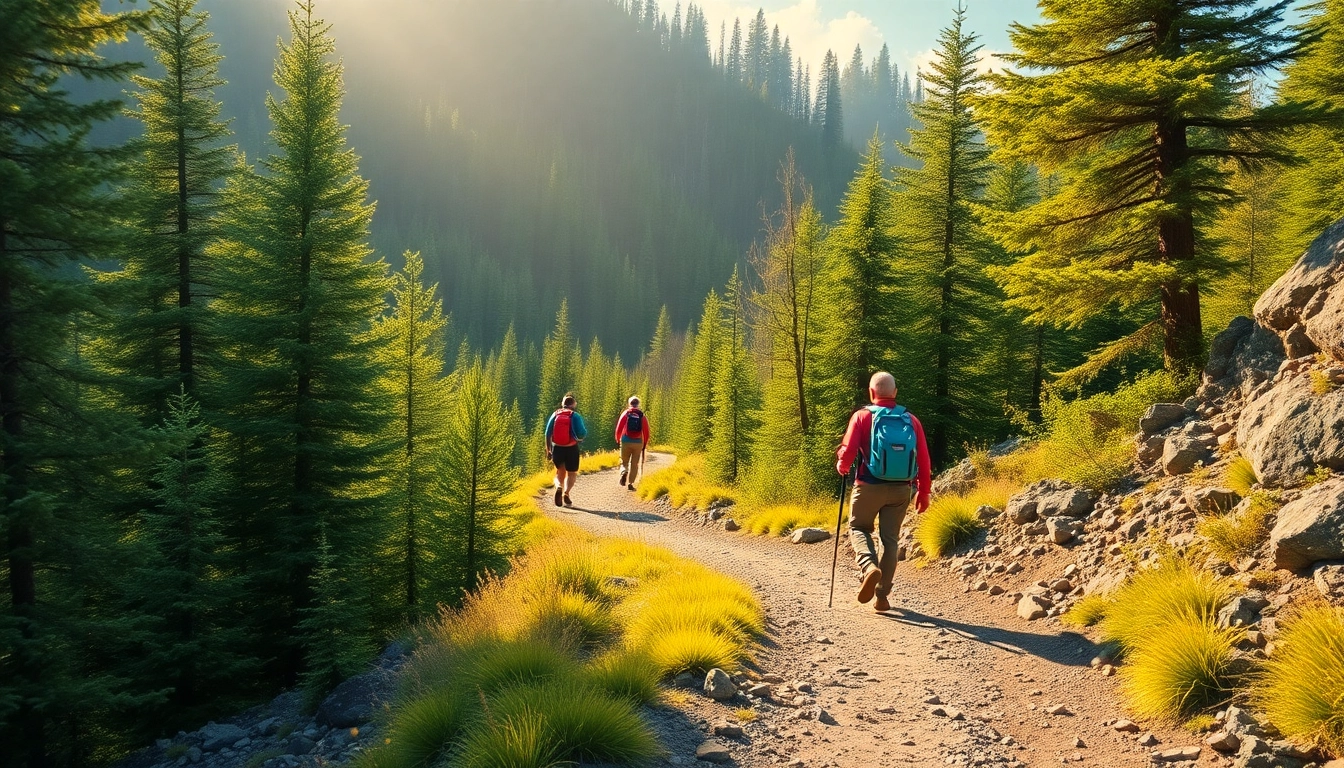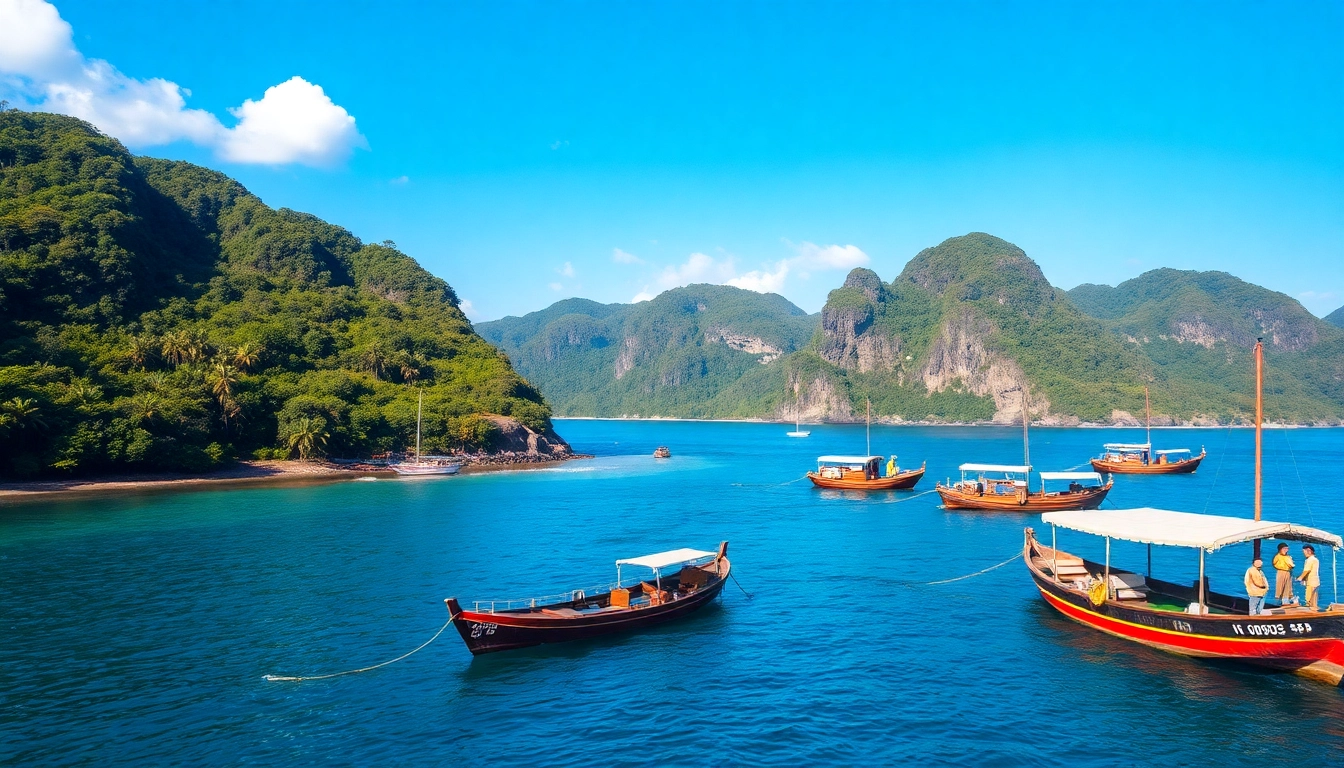Understanding the Basics of Hiking in Indonesia
Hiking is more than just a leisurely walk; it is an immersive adventure that connects individuals with nature, promotes physical health, and enriches cultural understanding. In Indonesia, a country renowned for its breathtaking landscapes—from lush rainforests and active volcanoes to pristine beaches—hiking offers a unique way to explore its diverse terrain. Whether you are a seasoned trekker or a novice eager to discover the wonders of Indonesian wilderness, understanding the fundamental aspects of hiking is essential. To start your journey safely and confidently, it’s crucial to grasp the definition and popularity of hiking in Indonesia, familiarize yourself with common types of hikes, and gather the right gear for your adventure.
For those eager to embark on their Indonesian hiking experiences, exploring hike opportunities in regions like Lombok, Bali, Java, Sumatra, and Papua can be particularly rewarding. These terrains offer a spectrum of challenges and sights, making Indonesia a hiker’s paradise.
Definition and Popularity of Hiking in Indonesia
Hiking, in its essence, is a vigorous walk, typically on trails or footpaths that traverse natural landscapes. Traditionally developed in Europe as a form of outdoor recreation, the activity has gained remarkable popularity worldwide, including Indonesia. The country’s varied topography—ranging from rolling hills and extensive forests to towering volcanoes—makes hiking a favorite pastime for locals and tourists alike.
In Indonesia, hiking transcends physical activity; it is an avenue to experience cultural richness, ecological diversity, and scenic grandeur. Regions like Mount Rinjani, the second-highest volcano in Indonesia, and the dense rainforests of Tanjung Puting, attract thousands of hikers annually. The surge in domestic and international tourism has further elevated hiking as a sustainable and eco-friendly way to explore Indonesia’s natural beauty.
According to recent tourism reports, hiking and eco-tourism have become significant contributors to local economies in Indonesia, supporting local guides, accommodation providers, and conservation efforts. This trend underscores why understanding the core elements of hiking in Indonesia is vital for an enriching experience.
Common Types of Hikes: Trail, Mountain, Jungle
Trail Hiking
Trail hiking involves walking along designated paths—ranging from gentle countryside walks to challenging mountain trails. These are often well-maintained and suitable for all skill levels. In Indonesia, trail hiking could mean exploring rice terraces in Bali or trekking through national parks like Gunung Leuser.
Mountain Hiking
Mountain hiking takes you to higher elevations and involves steeper, more challenging terrains. Climbing Indonesia’s iconic volcanoes, such as Mount Bromo or Mount Merapi, introduces adventurers to geologically active regions with spectacular vistas. Mountain hiking demands good physical fitness and preparation but offers rewarding panoramic views and a sense of achievement.
Jungle Trekking
Jungle hiking immerses you into dense tropical forests rich with biodiversity. In places like Tanjung Putting National Park or Bukit Lawang, a jungle trek can involve spotting orangutans and other endemic wildlife. This type of hiking often requires guides familiar with the terrain and ecology to ensure safety and ecological respect.
Essential Gear for a Safe and Enjoyable Hike
Clothing and Footwear
Proper clothing includes moisture-wicking shirts, layered outfits for temperature regulation, and durable, waterproof pants. Footwear should be sturdy hiking boots with good ankle support, suitable for uneven terrains.
Navigation and Safety Equipment
Carry a reliable map, compass, or GPS device. Personal safety gear like a whistle, multi-tool, first aid kit, and headlamp are indispensable. In remote areas, a satellite phone or personal locator beacon (PLB) can be crucial for emergencies.
Additional Essentials
Other must-haves include sufficient water, high-energy snacks, sun protection, insect repellent, and rain gear. Lightweight trekking poles can provide stability on steep inclines and reduce joint strain.
Equipping yourself with the right gear enhances safety, comfort, and the overall enjoyment of the Indonesian wilderness.
How to Prepare for a Memorable Hike
Choosing the Right Hiking Routes and Difficulties
Start by assessing your fitness level and experience. For beginners, easier routes such as Bali’s Campuhan Ridge or the scenic paths around Ubud provide stunning vistas without overwhelming challenges. Advanced hikers can attempt multi-day treks like the Rinjani Volcano or the Ijen Crater. Research trail conditions, elevation profiles, and local weather to make an informed choice.
Physical Preparation and Fitness Tips
Gradually build endurance through regular aerobic workouts like walking, running, or cycling. Incorporate strength training targeting legs, core, and back muscles. Practice hiking with loaded backpacks to simulate the actual experience. Adequate preparation reduces fatigue and minimizes injury risks.
Navigational Tools and Safety Equipment
Learn how to use your maps, GPS, or compass before your trip. Always inform someone about your itinerary and expected return. Packing safety equipment such as a first aid kit, sufficient water, and appropriate clothing ensures preparedness for unpredictable conditions.
Best Practices for Hiking in Indonesia’s Unique Terrain
Environmental Conservation and Responsible Hiking
Respect the natural environment by staying on designated trails, avoiding littering, and minimizing ecological impact. Support eco-tourism initiatives and adhere to local regulations. Ethical hiking preserves Indonesia’s fragile ecosystems for future generations.
Dealing with Challenges: Weather, Wildlife, Terrain
Indonesia’s tropical climate often brings sudden rain, high humidity, and temperature fluctuations. Prepare for weather changes by carrying waterproof gear and monitoring forecasts. Encountering wildlife requires caution; observe animals from a distance and avoid disturbing their habitats. Navigating diverse terrains—rocky, muddy, or steep—calls for specialized skills and cautious movement.
Local Regulations and Respectful Behavior
Respect local customs, dress modestly when necessary, and seek permissions if crossing private lands. Follow park rules, and engage respectfully with local guides and communities. Such conduct enriches your experience and fosters positive relationships.
Enhancing Your Hike Experience with Technology and Apps
Mapping and Trail Navigation Apps
Leverage digital tools like AllTrails, Gaia GPS, or local Indonesian apps tailored for hiking. These provide detailed trail maps, elevation data, and user reviews, helping you plan and navigate routes effectively.
Tracking Your Progress and Sharing Moments
Use fitness trackers or smartphone apps to record distance, altitude, and time. Sharing your journey on social media inspires others and keeps friends and family informed.
Emergency Communication and Safety Devices
Equip yourself with satellite communicators or personal emergency devices in remote areas lacking mobile coverage. Many devices now integrate GPS tracking and emergency alerts, providing peace of mind during solo or long treks.
Post-Hike Tips and Connecting with the Community
Recording Your Hike and Reflecting on the Experience
Maintain a hiking journal or blog documenting your routes, observations, and lessons learned. Reflecting on your adventures enhances appreciation and guides future planning.
Joining Hiking Clubs and Guided Tours
Engage with local or international hiking communities through clubs or online forums. Guided tours offer structured experiences, cultural insights, and safety assurance, especially in challenging terrains.
Planning Your Next Indonesian Wilderness Adventure
Use each hike as a stepping stone for more ambitious expeditions. Explore lesser-known trails, national parks, or remote islands to continually deepen your connection with Indonesia’s natural landscapes.

